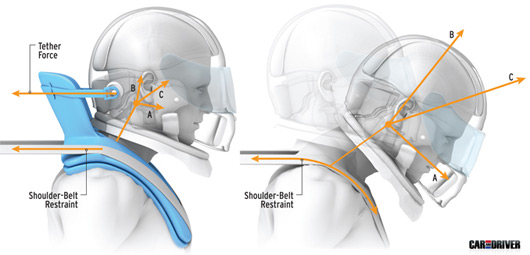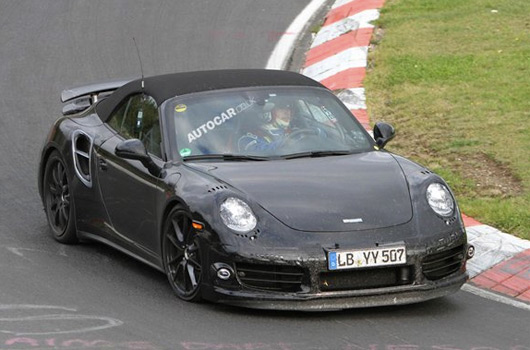
The Head and Neck Support device, better known as the HANS device, is now a common sight across racetracks the world over. The device even has widespread use in amateur racing as well. And when you see how well it works it is easy to see why.
Designed to reduce the chance of death or injury from basilar skull fracture Car and Driver has taken a statistical approach to see how safe the HANS device really is. Here is an extract of what they found:
With only a neck to restrain it, a 15-pound helmeted head lunges forward at 107 g during a 40-g head-on collision. Resulting “shear†(two opposing forces perpendicular to the neck’s axis) and “tension†(pulling force along the neck axis) loads vastly exceed the injury threshold, making death more likely.
The restraint provided by the HANS device reduces neck tension by 81 percent, shear by 72 percent, and the total neck load by 78 percent. The head experiences a tolerable 62 g. Because the driver’s head and neck motion is now in synch with his torso’s movement, chest g-forces rise slightly, though chest compression is reduced.
It’s hard to believe the original protoype was first used by co-creator Jim Downing way back in 1986. That’s eight years before the death of Ayrton Senna. And while the device may not have helped the three time F1 world champion, it probably would have saved the life of NASCAR legend Dale Earnhardt some seven years later. It was Earnhardt’s death which propelled the HANS device into the mainstream.
For a visual representation of the HANS device in action check out the video below. There’s also a background story from Channel 10’s RPM which went to air in 2010.
[Source: Car & Driver | Autoblog]









